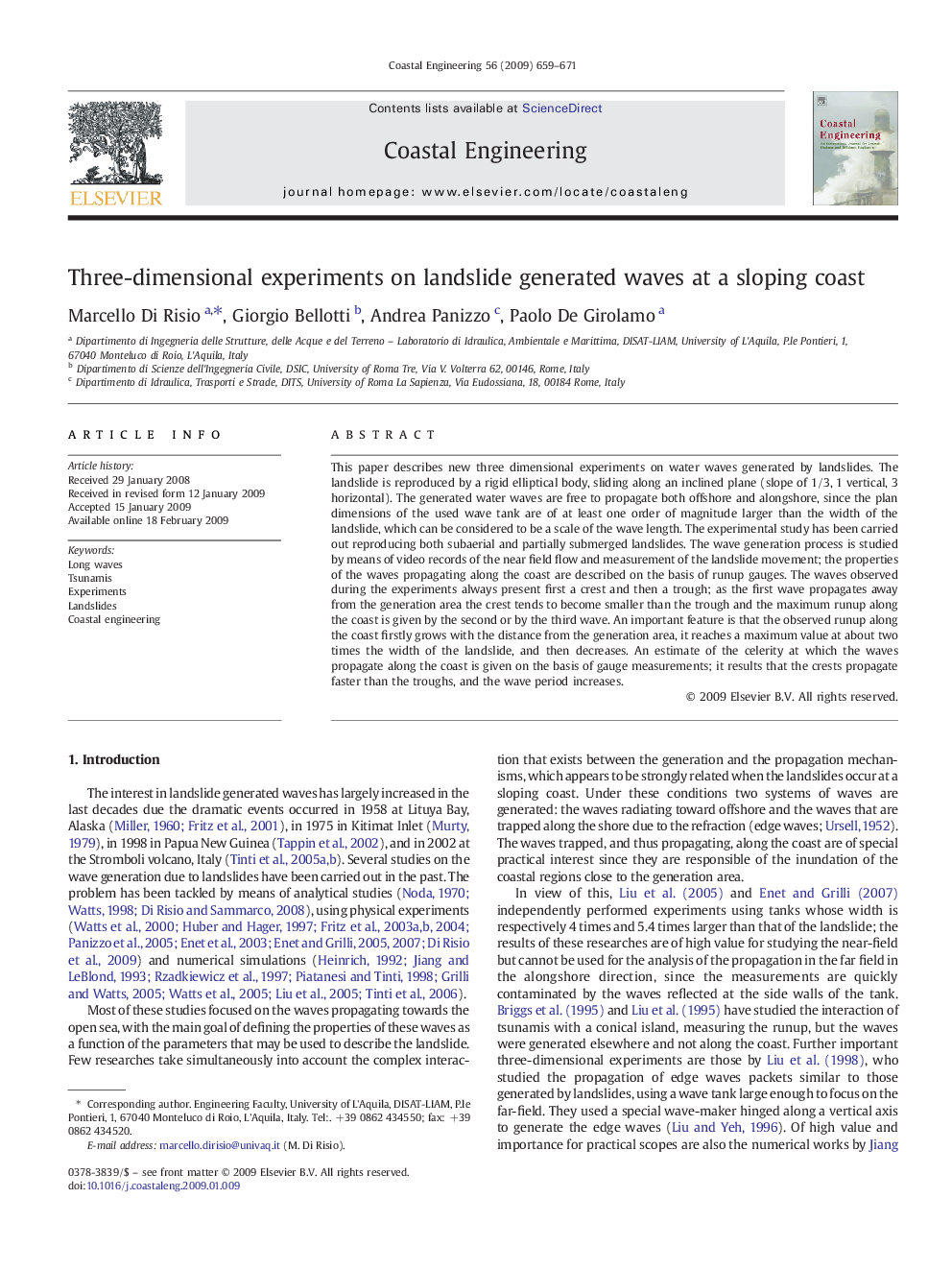| Article ID | Journal | Published Year | Pages | File Type |
|---|---|---|---|---|
| 1721245 | Coastal Engineering | 2009 | 13 Pages |
This paper describes new three dimensional experiments on water waves generated by landslides. The landslide is reproduced by a rigid elliptical body, sliding along an inclined plane (slope of 1/3, 1 vertical, 3 horizontal). The generated water waves are free to propagate both offshore and alongshore, since the plan dimensions of the used wave tank are of at least one order of magnitude larger than the width of the landslide, which can be considered to be a scale of the wave length. The experimental study has been carried out reproducing both subaerial and partially submerged landslides. The wave generation process is studied by means of video records of the near field flow and measurement of the landslide movement; the properties of the waves propagating along the coast are described on the basis of runup gauges. The waves observed during the experiments always present first a crest and then a trough; as the first wave propagates away from the generation area the crest tends to become smaller than the trough and the maximum runup along the coast is given by the second or by the third wave. An important feature is that the observed runup along the coast firstly grows with the distance from the generation area, it reaches a maximum value at about two times the width of the landslide, and then decreases. An estimate of the celerity at which the waves propagate along the coast is given on the basis of gauge measurements; it results that the crests propagate faster than the troughs, and the wave period increases.
